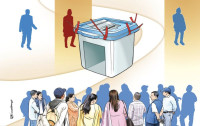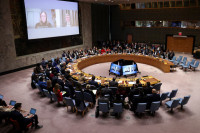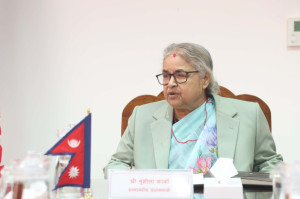Columns
Giving with the heart and the head
It would make a huge difference if everyone gave to charity based on effectiveness.
Peter Singer & Lucius Caviola
Worldwide, people donate hundreds of billions of dollars to charity. In the United States alone, charitable donations amounted to about $450 billion last year. As 2020 draws to a close, perhaps you or members of your family are considering giving to charity. But there are, literally, millions of charities. Which should you choose?
If you are like most people, you want to support charities that mean something to you—that speak to your heart. Perhaps it is a charity that helps children in your community, or a local homeless shelter where you have volunteered, or maybe a museum you’re passionate about, or a place of worship for which you want to show support. In the US, 94 percent of donations go to charities focusing on local or national issues.
Donating to a charity that pulls on your heartstrings is likely to be better than not donating at all. Very few charities are outright frauds. The bigger issue is that following your heart ignores research on which charities are the most effective. Some charities will do hundreds of times as much good with your donation—saving or improving many more lives—than typical charities do.
Usually, the most effective charities help the poorest people in the world’s least-developed countries. For example, the charity evaluator GiveWell estimates that the Malaria Consortium, one of its top charities working in malaria-prone low-income countries, can provide four months of preventive medicine to children 3-59 months old for less than $7 per child. On average, this saves a life for each $3,000-$5,000 spent.
In contrast, one of the charities working in the US that GiveWell regards as promising, the Knowledge is Power Programme, spends $9,000-$20,000 to improve the academic performance of one student for one year. Improving academic performance for a year can be important, but when doing that costs three or four times as much as saving a life, it’s obviously not giving comparable value for your donation.
Given the big differences in effectiveness, which charity you support matters a great deal. Experts estimate that even within the field of helping the world’s poorest people, the most effective charities do 100 times more good for a given sum than charities of average cost-effectiveness. If they are right, giving $100 to the most effective charities helping people in extreme poverty can achieve more good than giving $9,000 to a typical charity trying to do the same thing.
This way of thinking is a form of effective altruism. Effective altruists argue that when we give, we should try to get the best value for our money, as we do when we shop for ourselves.
It would make a huge difference and solve many global problems if everyone gave to charity based on effectiveness. But it is unrealistic to expect this to happen anytime soon, because for most people, giving is something deeply emotional. And, unfortunately, our emotions don’t scale proportionately to the number of individuals we can help.
Helping 100 individuals doesn’t feel 100 times better than helping one person. And helping someone on the other side of the world doesn’t feel as good as helping someone close by—especially when we can identify the person we are helping, like a sick child shown to us in a photo. Given these obstacles, what can we do to make effective giving more appealing?
A new donation platform offers a solution. GivingMultiplier.org encourages you to divide your donations. One part goes to your favourite charity—the one you personally care most about. The other part goes to a highly effective charity recommended by experts. And to multiply your impact, Giving Multiplier tops up both of your donations. The extra funds are provided by philanthropists who want to encourage more people to give effectively.
Why does this simple strategy work? One of us, Lucius Caviola—working with Joshua Greene, a professor of psychology at Harvard University—noticed that people feel almost as good about their donation when they give $50 instead of $100 to their favourite charity. Therefore, donors should not lose much by giving only half to their favourite charity, which allows them to give the other half to a highly effective charity—something people find meaningful.
So, Caviola and Greene devised Giving Multiplier as a means of enabling donors to experience the positive feeling for supporting the charity they most care about, while also donating to a highly effective charity. If, in addition, someone tops up their donations to increase their impact, they feel even better.
We should not expect everyone to become an effective altruist who gives exclusively on the basis of evidence about how much good a charity does with the donations it receives. For most people, giving remains primarily an emotional act. But it is realistic to expect many people to become part-time effective altruists, giving partly on the basis of their feelings and partly on the basis of what is most effective. If even just a quarter of all donors applied this strategy, millions of lives would be saved and improved—without donors having to forsake the charities closest to their hearts.
—Project Syndicate




 5.46°C Kathmandu
5.46°C Kathmandu
















